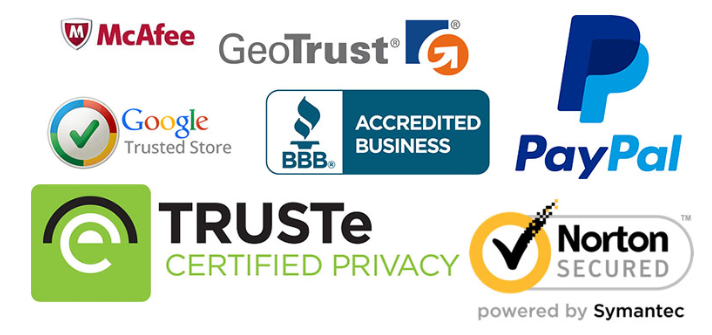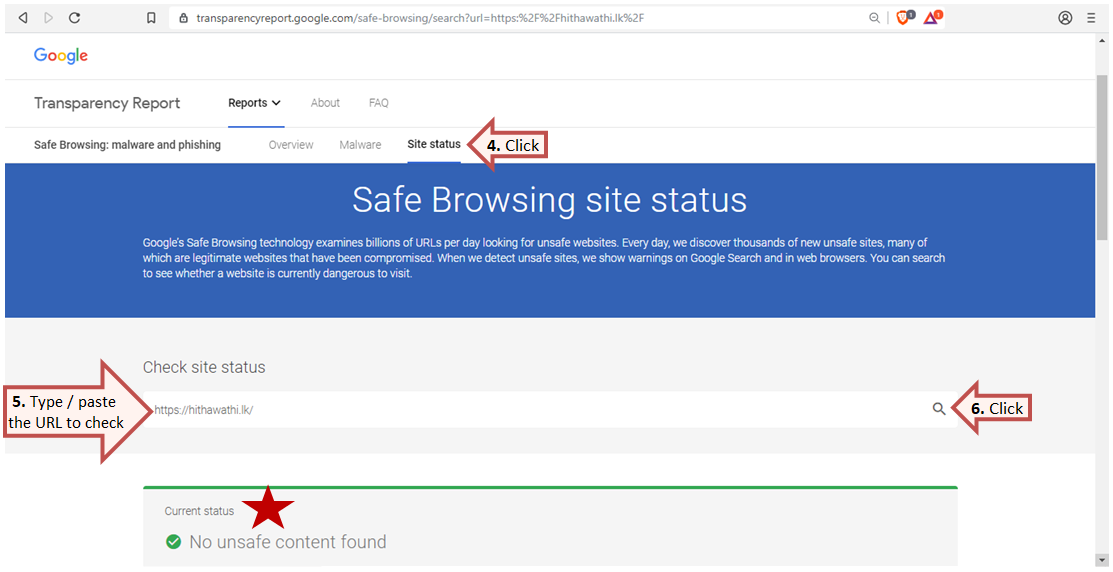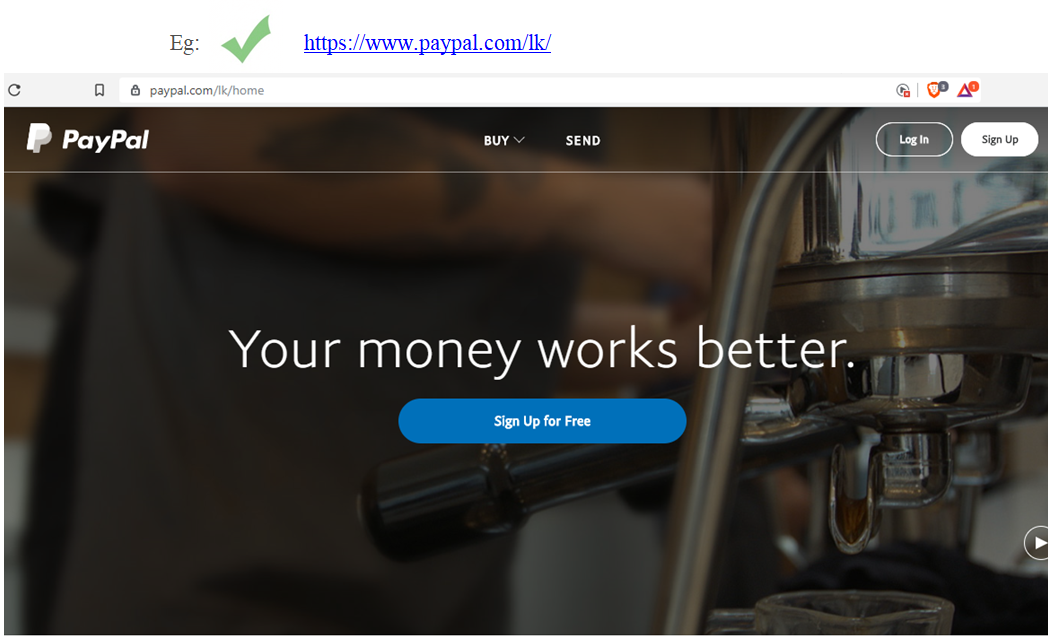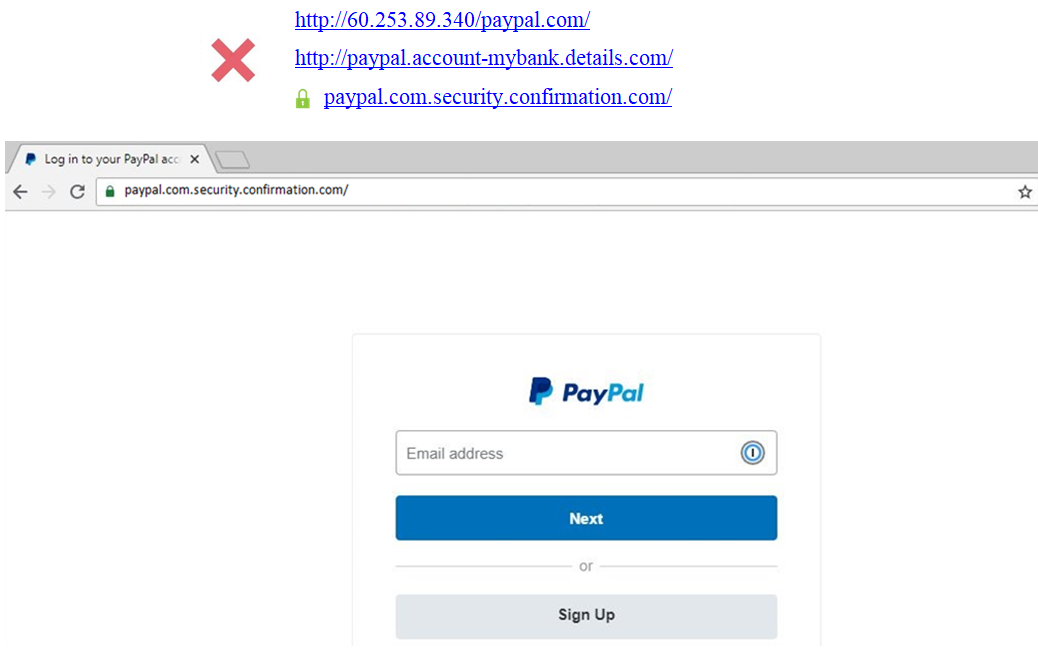Significant ways to
determine a fake or a fraudulent website







Pay Close Attention to
the URL
Have a look at the URL
when you visit a website or before clicking a link and verify whether it is a
real website.
URLs of some phishing
sites pretend to be quite genuine and safe with the use of appearance of the
real site, tricky spellings, sub domains, short URLs and SSL certificates.
Check Connection
Security Indicators
You may determine the
safety of a website by checking what protocol it comes with. If the protocol is
‘https’, it is more secure than a URL with ‘http’. Especially when you engage in
businesses with e-commerce (online transactions happening) websites, additional
security should be considered and prioritized. Therefore, NEVER PROVIDE your
personal information or credit card details to a site if you can’t find ‘https’
there.
Among the security
indicators, the Padlock icon or the EV name badge / Green address bar as shown
below play an important role to certify the connection security.

View Certificate
details
By clicking the padlock
icon () on the address bar, you may be able to view certificate details.
When you click Subject
in the Details tab of the Certificate, you may recognize what type of SSL
certificate (DV, OV or EV) the website of the organization possesses.
If it is a DV
certificate the details will just show a domain name. For an organization which
has an ecommerce website must have either an OV or an EV certificate to secure
your financial credentials. It is easy to identify the difference between OV
and EV. SSL Certificates with OV shows the State and the Country name apart
from the domain name. EV, going an extra mile, even indicates the Street name
of the registered organization.
Here is an example for
an organization (SSL) with EV certificate.

Look for Trust Seals
In addition to
verifying the legitimacy of the website, you can check for the trusted marks on
the internet. For instance,
Those trusted seals
will further assure you that the SSL certificate of the organization’s website
is in good standing and be on the alert for malware or other vulnerabilities.
Those marks normally appear on homepages, login pages, and checkout pages.

Consult the Google Safe
Browsing Transparency Report
To get a report of a
website to determine whether that is safe, you can copy the URL and paste it on
The Google Safe Browsing Transparency Report as shown below.


Expand the shortened links
There are services to
shorten the links, since it is sometimes necessary to fit into posts that
concern of word limit. E.g. Tweets. However, when a URL is too short, it is a
bit complicated to realize the actual destination of the URL. Therefore it is
always recommended to expand the shortened links using a service such as
CheckShortURL

The URL may consist of
a bunch of strange characters.
Using URL encoding with
special characters, hackers make an effort to hide the destination of malware
or phishing sites. Then it is not possible to identify the real destination of
such URLs unless you have a URL decoding tool. For instance, beware, if you see
a bunch of % symbols in the link.
The links received
through unsolicited emails and messages
Most of the time,
emails, text messages and pop-ups carry phishing links with content to draw
your attention as follows;
‘Verify your
information’
‘Do you recognize this
log in?’
‘Immediate action is
required’
Though you feel that is
unavoidable, never hurry to click any of the links without cleverly studying.
Simply do not trust them, since they may contain harmful virus.
Scan the link with a
link scanner
Scanning tools also
help you inspect a suspicious link before clicking. Among the safety checking
services, Norton SafeWeb, URLVoid, and ScanURL, often present a report of the
URL.
Enable the real-time or
active scanning option in your anti-malware software.
Finally, it is always
worthy to install an Anti-virus software to your PC / mobile phone and keep it
up-to-date. Apart from that you should consider of adding a Second Opinion
Malware Scanner to the device you use to surf internet.
We hope that the above facts
were useful to you in identifying and determining a fake or a fraudulent
website.
Reference:
https://www.thesslstore.com/blog/5-ways-to-determine-if-a-website-is-fake-fraudulent-or-a-scam/
https://www.lifewire.com/how-to-test-a-suspicious-link-without-clicking-it-2487171








0 Comments